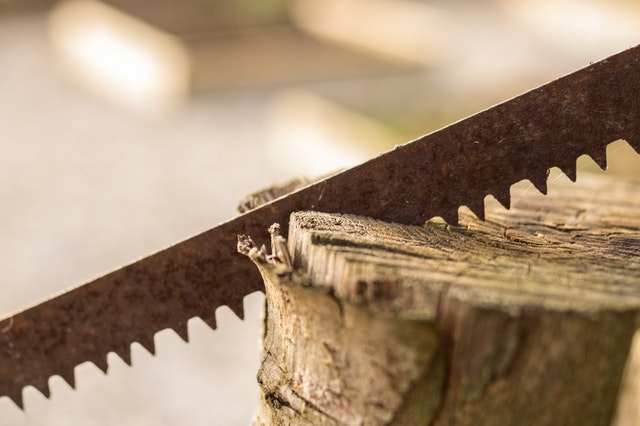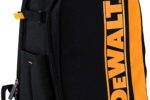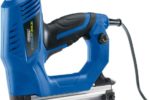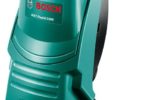Types of Saws | 2023 | UK Guide

When it comes to heavy-duty DIY demands and construction projects, the humble saw is an essential tool to use. However, with so many different types of saw on the market, it can be hard to decide which variety to choose to best suit the requirements of your project. There’s a great many electric saw models on the market, with even more manual options to choose from.
Types of Saws
To make life easier, we’ve put together a thorough list of the main types of saw you’re likely to encounter and just what exactly they’re capable of.
Hand Saws and Hacksaws
Perhaps the most recognisable variety of manual saw is the humble hand saw. An essential addition to any toolbox, the everyday handsaw allows for quick and easy cutting with wood and other materials. Although it’s easy to use and very effective, a hand saw is not a good choice if you’re looking to make cuts with any level of precision. If you’re looking to make delicate cuts into brittle pieces of wood, a hand saw is probably best avoided. However, they’re a good choice if you’re simply seeking to make rough cuts for firewood and the like.
Another familiar variety of saw is the hacksaw. The hacksaw comes in a variety of different sizes and allows the user to cut different types of material. In addition to being able to cut through wood, hacksaws are particularly suited to making cuts through metal. They’re surprisingly robust and incredibly easy to use. They’re also a good value option. Once the hacksaw blade itself has been blunted or distorted after heavy use, it can be released from the main body of the saw and released with minimal effort.
Saws for Outdoor Applications
Lumberjack saws are instantly recognisable thanks to their distinct two-handle design. They’re of course meant to be operated by two individuals, with one taking hold of either hand. They can be used to cut very large pieces of wood, namely tree trunks and logs, into smaller pieces. Otherwise known as cross-cut saws, they’re very handy for working with natural hardwood outdoors. However, they can blunt very quickly, so you will want to ensure you pick out one with robust blade teeth that will hold up well over time.
If you’re looking to prune trees and bushes, a pruning saw is another key tool to consider. This hardy hand too is just the ticket for making effective cuts through branches and can clear away thick hedges quickly. Pruning saws are often used in lieu of chainsaws and fulfil many of the same applications. However, if you’re looking to maintain better levels of precision while working, or simply aren’t comfortable handling an electric chainsaw, pruning saws are well worth looking into.
If you’re someone who enjoys the great outdoors and getting back to nature, you might have already come across camping saws and bow saws before. Camping saws are relatively compact in design and lightweight to match. This makes them incredibly portable and an easy addition to your camping gear. They’re relatively robust and able to make quick and effortless cuts through most branches and small pieces of wood, but the smaller the saw, the less powerful it will be. Bow saws are altogether larger and instantly identifiable by their closed-loop design. Provided they’ve been fitted with a sharp enough blade, bow saws can be used easily cut through dense wood material. They’re so-called for their visual similarity to an archery bow and, despite their large size, are surprisingly lightweight and easy to carry.
Precision Work
If you’re after more precise results and intend to make curved cuts and work at angles, you’ll have to cast the net wider to find the ideal saw for the job. One tool that might be fit for task is the fret saw. This type of saw boasts a higher back and thinner blade than other types, which makes it a go-to choice for when you want to make curved cuts or cuts at an angle. However, bear in mind that a fret saw is only really suitable for use with thinner cuts of wood. If you’re working with thin panels or wish or producing details, this is an ideal choice of saw to work with. Beyond that, you run the risk of damaging the blade.
Another staple saw for detail work is the coping saw. As with a fret, this type of saw can be put to good use in cutting intricate curves and angles. As with the fret saw, it’s only really suitable when working with thinner materials. Reach for a coping saw if you’re looking to cut wooden molding pieces, or if you’re working on smaller projects and softwood workpieces.
You might not have heard of veneer saws before, but they’re well worth adding to your tool box if you’re struggling with smaller jobs. These types of saws are specially designed for smaller scale projects and tighter time frames. The more compact design and smaller blades of this type of saw does of course bring some limitations. You’ve less range when it comes to the cuts you can make, for example. That being said, a veneer saw offers a great deal of control within the available range of its blade. What’s more, they allow you to work very quickly, with the final cut generally smoother in finish. The performance of such saws can be impaired quickly as debris collects, however, so it’s worth regularly cleaning the blade as you go to ensure best results.
DIY Essentials
The hardy backsaw is a heavy-duty choice for DIY and should be a cornerstone of your tool collection. A key design feature of the backsaw is the robust spine that can be found along the top of the backsaw blade. This spine has a very important purpose, namely to keep the cutting blade as stable as possible as you make your cut. As the spine carries along the entire length of the blade, you can enjoy the utmost in stability for the duration of the cut. Backsaw handles are also very durable and user-friendly, further adding to the superior levels of control handled by this saw type. Backsaws are often used in combination with a mitre box for those looking to make precise straight cuts without the need for power tools.
If you’re undertaking renovation work, another handy tool to consider adding to your inventory is the keyhole saw. Otherwise known as a jab saw, this tool looks more like a knife upon first inspection. This sharp point allows the saw to be jabbed through certain materials before you start to saw away. If you’re looking to remove sections of drywall, this is an ideal option as it allows you to stab through the outer layer of material so the saw teeth can get a grip. Then, you can begin sawing away to remove large sections of debris. It might not offer great levels of precision, but it’s perfect for starting things off. Once you’ve made your initial cuts and cleared enough room to work with, you can move in with larger manual saw or power tools to more effectively get on with the task at hand.
Other Saw Varieties to Consider
One model of saw often overlooked by DIY enthusiasts is the bone saw. As the name would suggest, it’s used for cutting through bone. That being said, it’s not limited to culinary applications. The robust nature of a bone saw means it can be cut through hardy materials with ease. If you’re not too concerned about a smooth finish to the cuts you’re making, it’s a great go-to when the going gets tough.
Japanese saws, otherwise known as nokogiri saw, is a specialist model of hand saw often used in woodworking. Historically, this type of saw was used by Japanese carpenters and works differently than most types of saw used in the western world. Unlike most saws, which make the cut as the user pulls back on them, Japanese saws make their mark as the user pushes. This type of saw boasts many small and sharp teeth that allow them to cut quickly through wood and facilitates their signature push strike cut. However, hardened spine found at the top of the saw blade that forms the robust backbone of this saw means you’re limited to smaller workpieces.
Power Tool Alternatives
Sometimes, a hand-powered saw just isn’t going to cut it. Whether you’re tackling a mountain of a job or simply working with hardier materials, often the only way to go is electric. With these power tools, the saw blade is driven by an electric motor. The user benefits from not having to put in as much effort manually, allowing you to undertake much more extensive tasks. Electric saws are also the way to go if you’re looking to maximise precision with your cuts. If you’re looking to make the same cut many times over, or need to follow strict guidelines for construction projects, you really need to be sticking with electric saws as the standard.
Common Electric Saw Varieties
One of the most popular types of electric saw for DIY enthusiasts is the jigsaw. The innovative power tools can be used to cut relatively intricate shapes and curves, making them a good bet for all manner of tasks. Although jigsaw blades aren’t ideal for cutting robust materials or undertaking heavy-duty work, the slim blades of this type of saw are perfect for cutting through thinner workpieces with ease. Jigsaws are incredibly user-friendly, with features designed to accommodate the less experienced with power tools. However, jigsaw blades will become damaged over time and need replacing. That being said, it’s simple to do so and you’ve a range of options available when it comes to replacement jigsaw blades.
Somewhat similar to the jigsaw is the band saw. Unlike the compact and handheld design of the jigsaw, the band saw also boasts a table to which the cutting tool itself is attached. Thanks to the firm base that this table provides, the cutting saw can be used to make all manner of precise cuts. Used properly, a band saw can be used to make cuts with intricate angles. You can also use a band saw to make perfectly curved cuts and circular cut-outs. What’s worth bearing in mind here is that, as with the jigsaw, the blade of a band saw is relatively thin. It’s more than able to handle thinner pieces of material, but push it beyond its limits with thicker workpieces and you run the risk of damaging the blade.
Circular Saws and Mitre Saws
Looking to swap out your humble handsaw for something that does most of the work for you? A circular saw may be the way go. This motorised take on the traditional hand saw allows you to make the same sort of cuts you’d get from a manual version, but benefits from being able to operate continuously. If you’re finding yourself tire quickly, this is an ideal choice. What’s more, you’ll find cordless versions readily available, making circular saws a very versatile way to go.
If you’re hoping to make angled cuts, then mitre saws are the way to go. You should definitely invest in a mitre saw if you require angled edges that need to fit together neatly. Mitre saws are simple bench-top devices, although there’s a great variety within the category. You’ll find plenty in the way of budget-friendly options if you’re just starting out with DIY projects, while the more experienced user has plenty to consider at the premium end of the market.
For Precise Cuts
If you’re looking to maintain good levels of precision as you make cuts to workpieces, a table saw is a good way to go. With a table saw, the blade itself and the cutting component is kept firmly in place, allowing you to make more exact cuts along straight lines. This model of electric saw features a table on either side of the saw element itself, while the integrated stand boasts wider legs that allow for better weight distribution. The overall result is a power tool that’s incredibly stable and sturdy when cutting. This makes it an ideal choice if you’re looking to cut larger pieces of wood.
Heavy-Duty Electric Saws
If you’re looking for a motorised alternative to a keyhole saw to make quick work of drywall and renovation jobs, a reciprocating saw is well worth considering. This type of power tool replicates the classic action of a handsaw, giving you a robust forward and backwards sawing motion. This heavy-duty action is further enhanced by the inclusion of very sharp saw tooth found at the front of the blade. This allows you to use a reciprocating saw in much the same manner as a keyhole saw. To commence work, simply jab the point through the material you’re working with to begin sawing. As with manual keyhole saws, the trade-off with a reciprocating saw is that you’re limited to lower levels of precision. However, it’s a great way to start off larger jobs.
Finally, we’ll look at one of the most instantly recognisable types of electric saw on the market. We’re of course talking about the classic chainsaw. You’ll no doubt want to invest in a chainsaw if you’re looking to clear large spaces of land of stubborn branches and overgrowth. When it comes to picking out the right chainsaw for you, you’ve plenty of options. In addition to wired varieties that generally boast higher performance levels and better cutting action, you’ve a wide raft of cordless options to choose from. Going cordless and more compact is a good bet if you’re looking to tackle more awkward cutting angles and tighter spaces, although the smaller design usually means you compromise on power and battery longevity. However, if you only anticipate moderate use or want to supplement a more heavy-duty model, they’re an essential addition to your power tool line-up.






